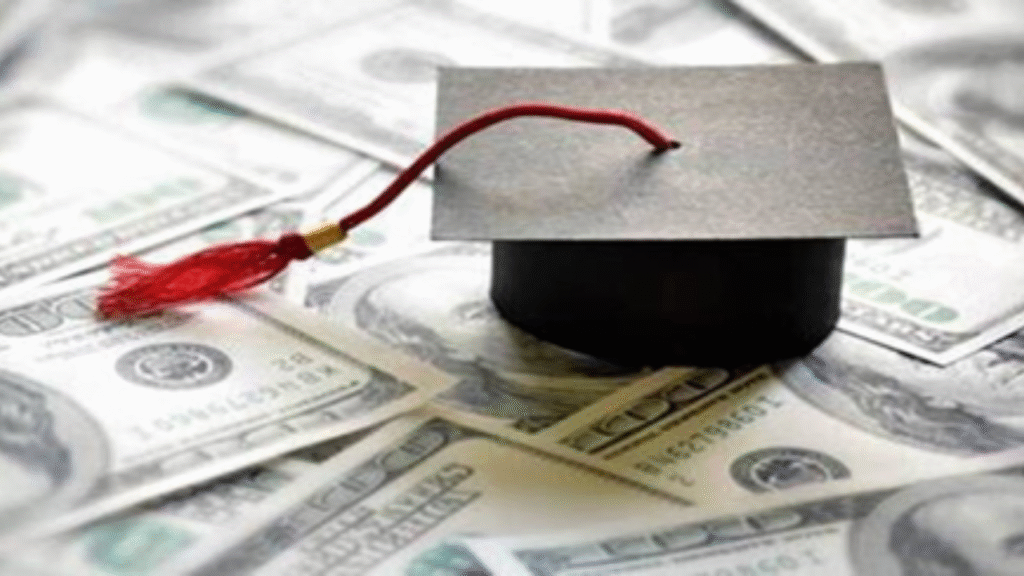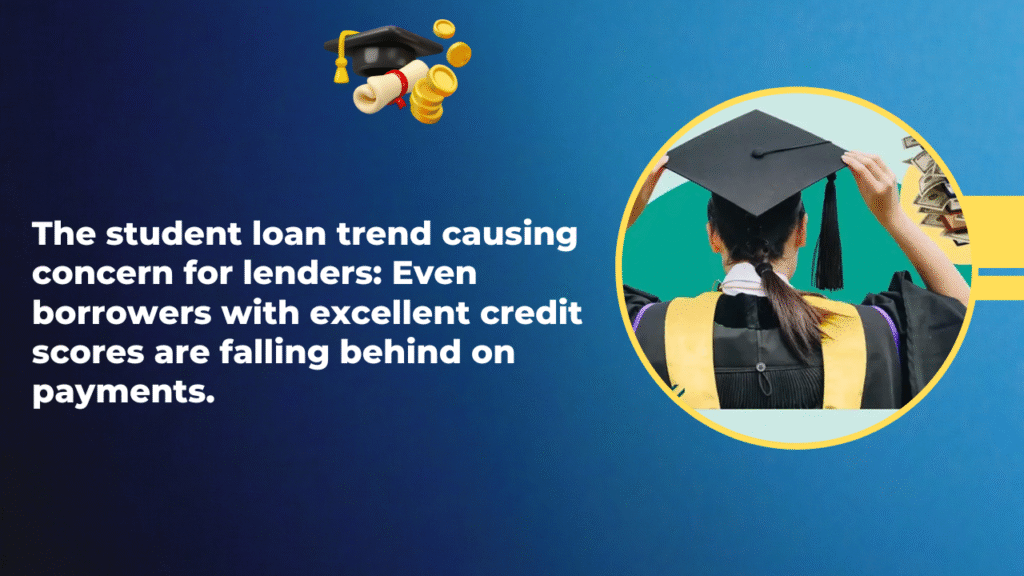As the nation grapples with student loan debt following the resumption of federal loan payments, a troubling trend has emerged that is sending ripples through the financial sector. Even borrowers with strong credit histories are falling behind on their student loan payments, and this development is raising concerns among lenders and credit agencies alike.
In early 2025, the U.S. faced a sharp increase in student loan delinquencies. Approximately 9.2 million federal student loan borrowers were behind on payments—an alarming surge from pre-pandemic levels. Perhaps more troubling is the fact that a significant portion of these delinquent borrowers—around 25%—had “prime” credit scores prior to missing payments, according to industry reports.
The Surge in Delinquencies
The return to regular federal student loan payments, which had been paused during the pandemic, is now being felt by millions of borrowers. For many, the restart has not been seamless. Monthly payments ranging from $500 to $1,500 have left many borrowers struggling to meet their obligations, especially in an economy strained by inflation and higher living costs. The situation has left borrowers who were previously able to manage their finances without issue in a vulnerable position.
Before the pandemic, federal student loan payments were generally not reported to credit bureaus in the same way. But now, as borrowers miss payments, these delinquencies are being recorded, and credit scores are taking a hit. Some borrowers have seen their credit scores drop by as much as 129 points, while others have faced declines exceeding 200 points.
Economic Pressures on Borrowers
The return to student loan payments comes amid significant economic pressures. Inflation has made everyday goods more expensive, and many households are having to choose between paying bills and meeting basic needs. The cost of living is on the rise, and borrowers, especially those who had been relying on temporary relief measures, are now facing a significant financial burden.
In addition to the financial strain of high loan payments, borrowers are also encountering administrative challenges. Loan servicers are struggling to manage the transition back to repayment, resulting in errors and confusion for borrowers. With loan servicers often failing to provide the needed guidance, borrowers have found themselves lost in a complicated system, exacerbating the stress of an already difficult situation.
The combination of economic pressures and administrative difficulties is making it harder for borrowers to get back on track. Those who had been hoping to regain their footing are finding themselves overwhelmed by the complexity of the system and the financial burden of repayment. As a result, even borrowers with good credit histories, once considered low-risk, are now slipping into delinquency.
A Growing Concern for Lenders
For lenders, the rise in delinquencies is especially concerning. The fact that even borrowers with strong credit are falling behind on their payments is an indicator that financial instability is affecting a broader range of individuals. This trend is raising alarms about the potential for increased default rates, which could have serious ramifications for the financial system.
The ability to make timely payments on student loans is crucial not only for borrowers but also for the lending institutions that hold these loans. A higher default rate would increase the risk to these financial institutions, and lenders are now bracing for potential disruptions in the student loan market. Some are beginning to question the sustainability of current lending practices in light of these emerging trends.

The Role of Government and Policy
The U.S. government has taken steps to provide relief to borrowers during the pandemic, with temporary payment suspensions and interest freezes. However, as these protections come to an end, millions of borrowers are left facing a harsh reality. The pause on payments provided much-needed breathing room for many borrowers, but it also created a sense of complacency for others who now find themselves struggling to manage their student loan obligations.
To help address these challenges, federal agencies like the U.S. Department of Education have rolled out several programs to ease the transition back to repayment. These programs include income-driven repayment plans, which adjust monthly payments based on income and family size, as well as loan forgiveness options for qualifying borrowers. However, these measures are not a one-size-fits-all solution and may not fully resolve the financial strain that many borrowers are experiencing.
Borrowers can find more information on available repayment plans and relief options on official government websites, such as the U.S. Department of Education’s Federal Student Aid website, which offers guidance on managing federal student loans, or the Student Loan Forgiveness Program.
What Lies Ahead?
The growing trend of delinquency among borrowers with good credit is a warning sign that the current student loan system may need to undergo reform. While some steps have been taken to address the issue, the situation underscores the urgent need for long-term solutions to help borrowers manage their debt more effectively.
For now, borrowers must navigate a complicated and often frustrating repayment system, with high monthly payments and limited support. It is clear that the challenges surrounding student loan debt are not going away anytime soon.
Lenders and policymakers alike must work together to find a way to address these emerging trends. Without intervention, the current trajectory may lead to increased defaults and greater financial instability for borrowers. The path forward will require a concerted effort to ensure that student loan repayment is manageable and fair for all borrowers.
Conclusion
The alarming rise in student loan delinquencies, even among borrowers with prime credit scores, highlights the financial difficulties many Americans are facing in the wake of the pandemic. As borrowers struggle to meet their loan obligations, both economic pressures and administrative challenges have combined to create a precarious situation. Lenders are watching closely, aware that the default rates may continue to rise. In response, the government must find effective ways to support borrowers and reform the student loan system to prevent further financial instability.

